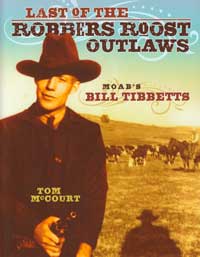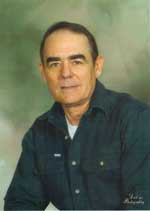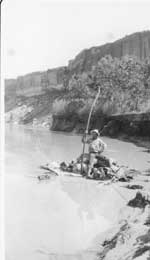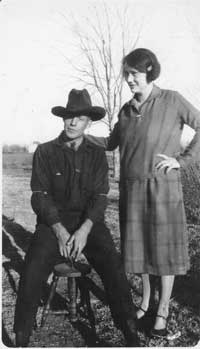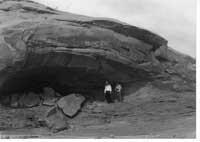| HISTORIC HAPPENINGS August 2010 | |||||
New Robbers Roost Outlaw Book Could Become Film |
|||||
It isn’t like news travels fast. “Sales are doing great!” exclaimed CNHA executive director Cindy Hardgrave. “Locally, because he is well-known locally—I think that was a big chunk of it. But what we have found is that the visitor who comes through Moab —and it’s sold predominantly in this region—is pretty intrigued by the story. Some of the hoteliers here in Moab have decided to sell it, and the cover’s really strong, and shelf appeal is everything, and I think there is an interest in this kind of Old West.”
“A lot of our visitors—this is their first time through—and they saw all the John Wayne movies, and they want to make that connection, so I think that has a lot to do with it,” she added. The media promptly picked up on the new angle on Robbers Roost, a land made famous as the southern Utah hideaway for Butch Cassidy and the Sundance Kid, and of Matt Warner and other notorious outlaws. McCourt, an author based in Price, and his Tibbetts book were featured on Utah Public Radio in early June, as a full-page feature in Ogden’s Standard-Examiner on Father’s Day, The Sun Advocate in Carbon County and various papers. Most recently McCourt was contacted by The Deseret News, but also by “different groups exploring the possibility of making a movie out of it,” McCourt said in an interview.
Since the book’s release, more facts have surfaced about the episode that included a jailbreak and manhunt that culminated in the deaths of numerous stock but not men. Among new findings is an eyewitness account of a Tibbetts inscription carved into stone in another cave in Stillwater Canyon of the Green River, according to McCourt. That’s exciting news, because to date there’d only been one inscription found in a cave the pair hid out in near the White Rim. The newly-reported inscription helps track the exact trail of the outlaws during their successful getaway in 1924, which grew so perilous they resorted to jumping off ledges on their horses and eating grasshoppers to stay alive. Ephraim Moore, 18, assumed the role of mid-wife without much choice, delivering little Bill on a cold day in March 1898 in a cabin at Old La Sal, where Moore found his sister, Amy Moore Tibbetts, alone and in labor.
Bill grew up strong-willed and defiant, disliking his stepfather but always seeing to his mother’s welfare. With Perkins, he stole some horses when he was a juvenile, earned time in reform school, got out and joined the Army, then returned to partner with Uncle Eph in the cattle business. Those were the days before cattle grazing was regulated on public domain. Tibbetts and Moore claimed some range along the Green River below the White Rim of Canyonlands (long before the area became a park), but eventually moved to the upper mesa of Island-in-the-Sky, competing for rangeland there with big-name cattle companies. According to Tibbetts’ account, he and Perkins were set up on false charges of cattle rustling and killing a calf. They were arrested and jailed in Moab, broke out with the aid of family and a pry bar, and made a run for it by boat and horses to the old range, Robbers Roost, and out-of-state. They avoided Moab long enough for the charges to die under the statute of limitations, and Bill returned, only to end up partners with one of his original accusers, and finally, fully redeemed and a family man, to take on the role of town marshal. “I’ll tell you what it’s done. It’s opened the eyes of a lot of people to the canyonlands country,” he said. “I’ve had people contact me and tell me, ‘I’ve been down there and I’ve seen that country. I’ve been on the Island-in-the-Sky and I’ve been over in the Maze and that, but I’ve got to go back now and see it again because now I know a story that happened there, and I want to go back and see it again, now that I understand something that happened there, and I can put a person there, and a place and a time and an event, and it makes it more real for me now.’
“That’s kind of what I was trying to do when I was writing it was to give (a feel for) these places: Elaterite Basin, even the Robbers Roost…the Big Flat, and the White Rim,” McCourt said. “I’ve had a lot of people say to me, ‘Gee, I’ve looked out at the White Rim and it didn’t mean a thing to me, but now: How the hell would you run cows down there? I’ve got to look at that again!’” |
